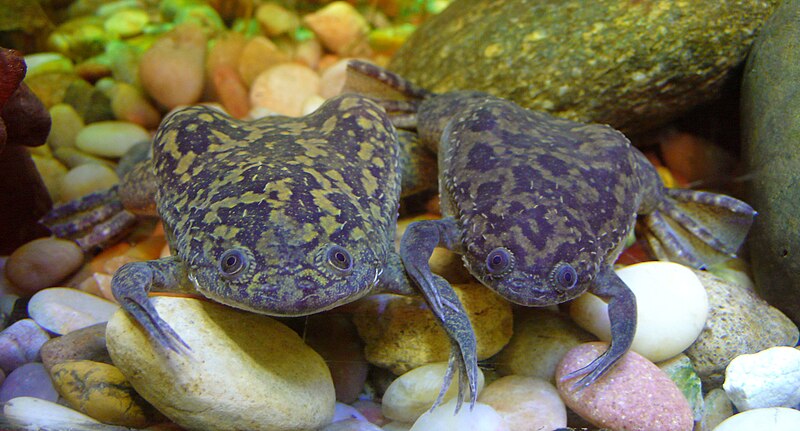As autumn approaches I invariably receive questions from reptile owners whose pets have lost interest in food. This most commonly occurs among Red Eared Sliders, Box and Painted Turtles, and other North American species, but may show up in lizards and snakes as well.
Amphibians in general, and reptiles from regions without a seasonal change, are largely immune. Bear in mind, however, that many species native to warm climates do experience a cool season – Bearded Dragons are a prime example, with certain populations hibernating in the wild.
Internal Controls on Behavior
It is common for native reptiles to slow down or stop feeding as the seasons change; often circadian rhythms (“internal clocks”) control this, and they will not feed even if kept warm. As long as the animals are otherwise in good health, they will be fine. We are learning that reptiles have amazing abilities to alter their metabolisms to suit local conditions (please see article below). Gharials (fish eating crocodilians) that I kept for 17 years at the Bronx Zoo went off feed annually, right in sync with wintertime in their native Pakistan. Despite being kept at 86-92 F, and moving about daily, they lost almost no weight over their 3 month fasting period.
Keeping Turtles in Winter
Sliders, Snapping Turtles and others that refuse to feed as fall approaches can be kept in water that is at average room temperature (65-68F) or a bit higher over the winter. Leave their UVB and basking lights on during the day, as they will continue to bask and move about. You can offer food 1-2x per week, but they will likely not eat much. Sick or stressed animals are another matter…please write in if you need advice.
Actually putting reptiles into true hibernation by lowering temperatures significantly is tricky, although often an important breeding stimulus. Please write in if you need further information.
Future Research -Your Observations Needed
One thing I’ve noticed, and which I’d like to research further, is that wild-caught turtles, even if taken into captivity on the day of hatching, usually stop feeding in the winter, while captive-hatched animals of the same species feed throughout the year. I would be very interested to hear from readers with similar or different experiences, thanks.
Further Reading
Please see Hibernation in Captive Bearded Dragons for specific information on these popular pets.
There is some amazing new information coming to light on snake metabolisms. Please check out How Snakes Grow During Times of Food Deprivation.
 The larvae of the Black Soldier Fly, Hermetia illucens, have recently attracted a great deal of interest as a food item for herps, birds, fishes and invertebrates. Also sold as “Phoenixworms”, “Calciworms”, “Reptiworms” and “Soldier Grubs”, they are reputed to be superior to other insects in nutritional value. However, much of what has been written about them is confusing and contradictory. Today I’ll review the available research and my own and other’s experiences and attempt to sort fact from fiction, science from opinion.
The larvae of the Black Soldier Fly, Hermetia illucens, have recently attracted a great deal of interest as a food item for herps, birds, fishes and invertebrates. Also sold as “Phoenixworms”, “Calciworms”, “Reptiworms” and “Soldier Grubs”, they are reputed to be superior to other insects in nutritional value. However, much of what has been written about them is confusing and contradictory. Today I’ll review the available research and my own and other’s experiences and attempt to sort fact from fiction, science from opinion. That Reptile Blog – Reptile, Amphibian and Exotic Pet Care and Information
That Reptile Blog – Reptile, Amphibian and Exotic Pet Care and Information


